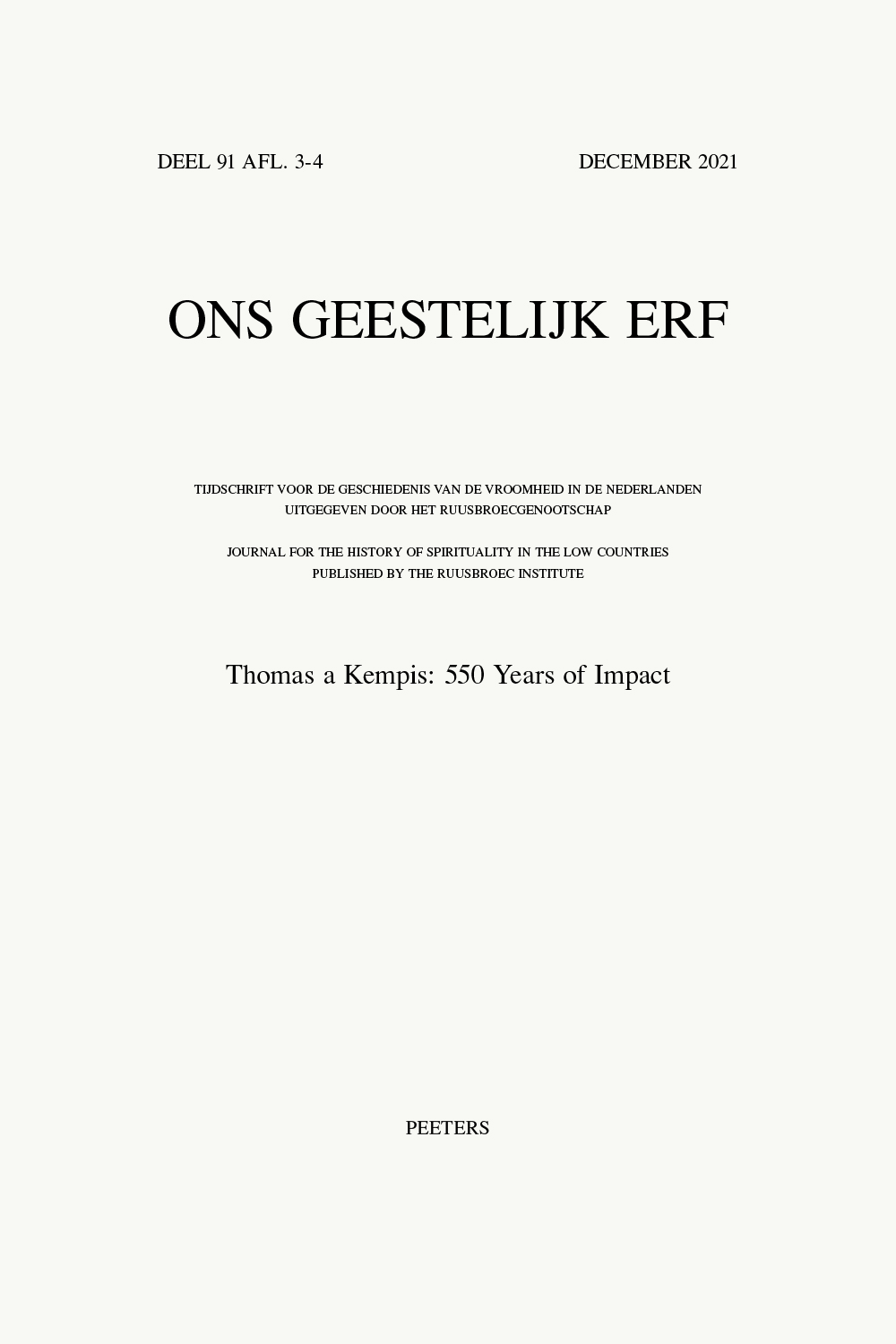next article in this issue  |

Preview first page |
Document Details : Title: Herp in de herberg Subtitle: Een zestiende-eeuwse pelgrimsreis met elementen uit de Spieghel der volcomenheit Author(s): DLABAČOVÁ, Anna Journal: Ons Geestelijk Erf Volume: 82 Issue: 1 Date: Maart 2011 Pages: 3-58 DOI: 10.2143/OGE.82.1.2059878 Abstract : The 16th-century manuscript Heeswijk, AB (Abbey of Berne): 7, contains four mystical texts, three of which contain larger or smaller parts of the treatise Spieghel der volcomenheit, written by the Dutch mystic Hendrik Herp between ca. 1455 and 1460. Herp was an important member of the religious movement of the Franciscan Observance. This article focuses on the role of the Spieghel within the manuscript, while also gathering other clues as to a possible historical context in which the treatises and the manuscript as a whole could have been conceived, read and used. Firstly, the text encompassing the most substantial parts of Herp’s extensive mystical handbook is examined: the Profytelycke ende scoen pelgrimagie (‘Profitable and fair pilgrimage’), in which the mystical ascent is portrayed as a journey of a pilgrim along a number of inns. Subsequently the view is broadened to the other treatises in the manuscript. By analyzing the texts, the manuscript can eventually be placed in a milieu in which Herp’s work was still being read, studied and (re)used in new texts between 1500 and 1550. Among other facts, the analysis shows that the texts largely concentrate on Herp’s exercise of toegeesten, a form of aspiratory prayer. Herp’s warnings against a too intense spiritual life are adopted and further elaborated. Furthermore the Profytelycke pelgrimagie shows textual correspondence with the so called Opdrachtbrief (‘Letter of dedication’), written as an introduction to the Evangelische Peerle (‘Evangelical Pearl’). The Peerle was published by the Cologne Carthusians (first edition 1535). Possibly written by the Cologne Carthusian Gerard Kalckbrenner, the introductory letter expresses a strong ‘pilgrim spirituality’: the author is portrayed as an enlightened pilgrim and the readers are addressed as fellow pilgrims. As there is no mention of such a strongly pilgrim oriented spirituality in the rest of the Evangelische Peerle, it is not unlikely that the dedicational letter was inspired by the Profytelycke pelgrimagie. One of the other texts in the Heeswijk-manuscript turns out to be the so called Corte Oeffeninghe (‘Short exercise’), a from 1555 onwards frequently printed treatise, which was also linked to the circles around the author of the Evangelische Peerle. Thus the Profytelycke pelgrimagie, and the manuscript Heeswijk, AB: 7 as a whole, can be placed within a closely knit network of the Cologne Carthusians and Dutch devotional women, in particular the Canonesses Regular of St. Agnes, Arnhem. The sisters of this convent showed a great (renewed) interest in mysticism and the author of the Peerle possibly originated from their circles. The texts in the Heeswijk-manuscript are a first indication of the influence of Herp’s Spieghel on 16th-century mysticism. This mysticism seems not to be a sole ‘merging of 14th-century flemish and rhinelandish mysticism with 16th-century renewal’. The 15th-century mysticism must have been a strong influence as well: in this intervening century the 14th-century mysticism was already brought together and adapted by the Franciscan observant Hendrik Herp and his successors. |
|


